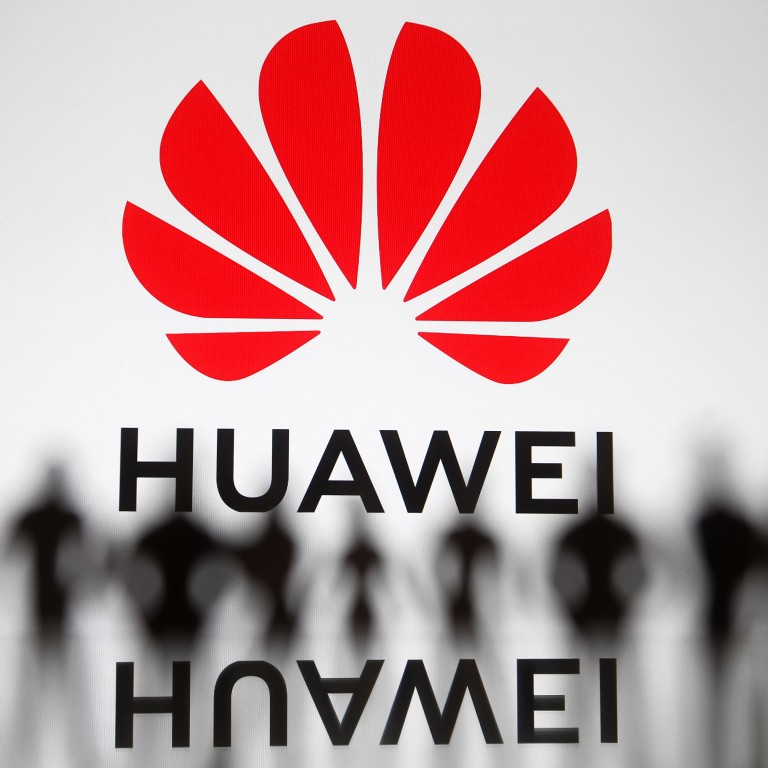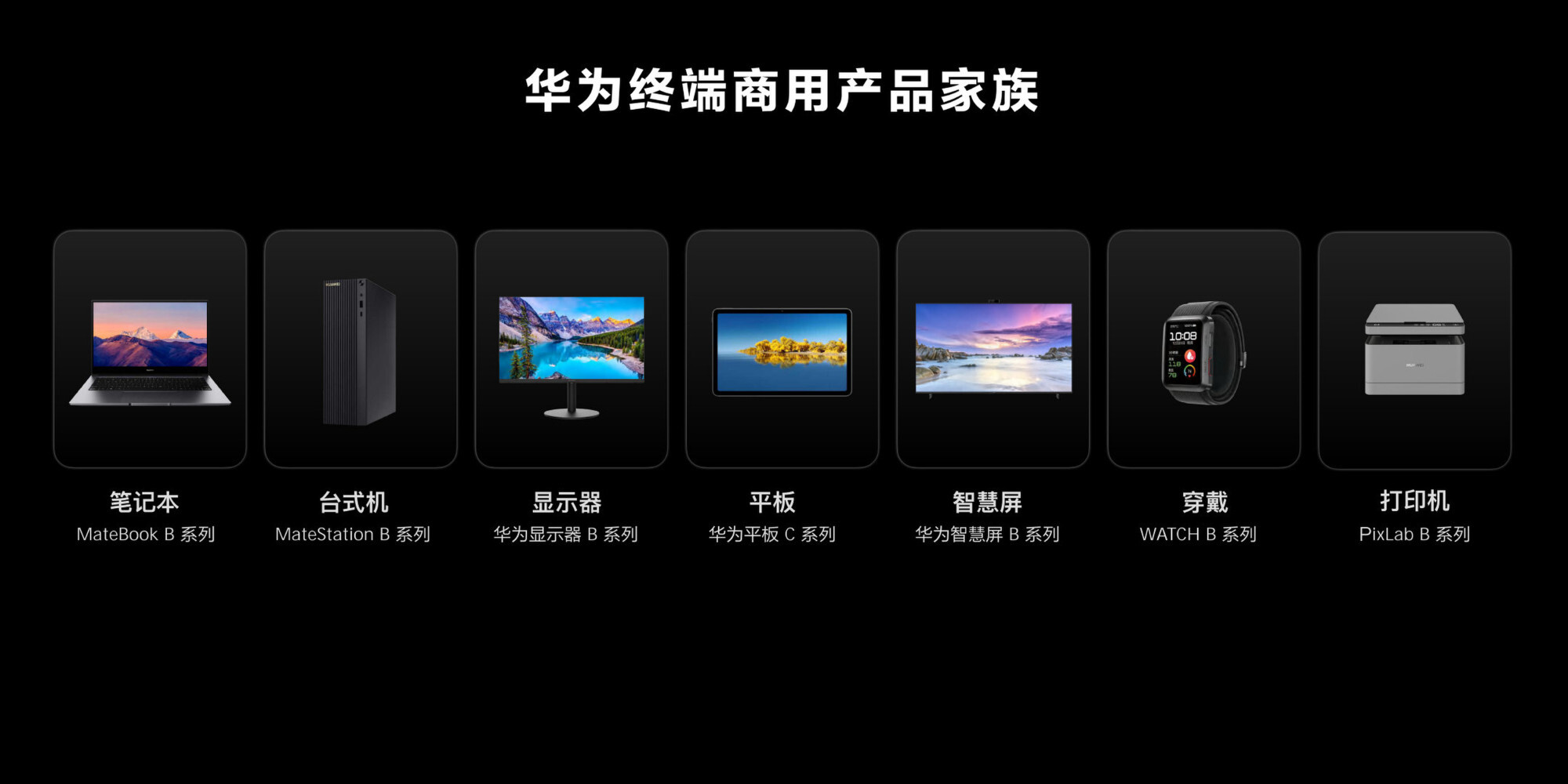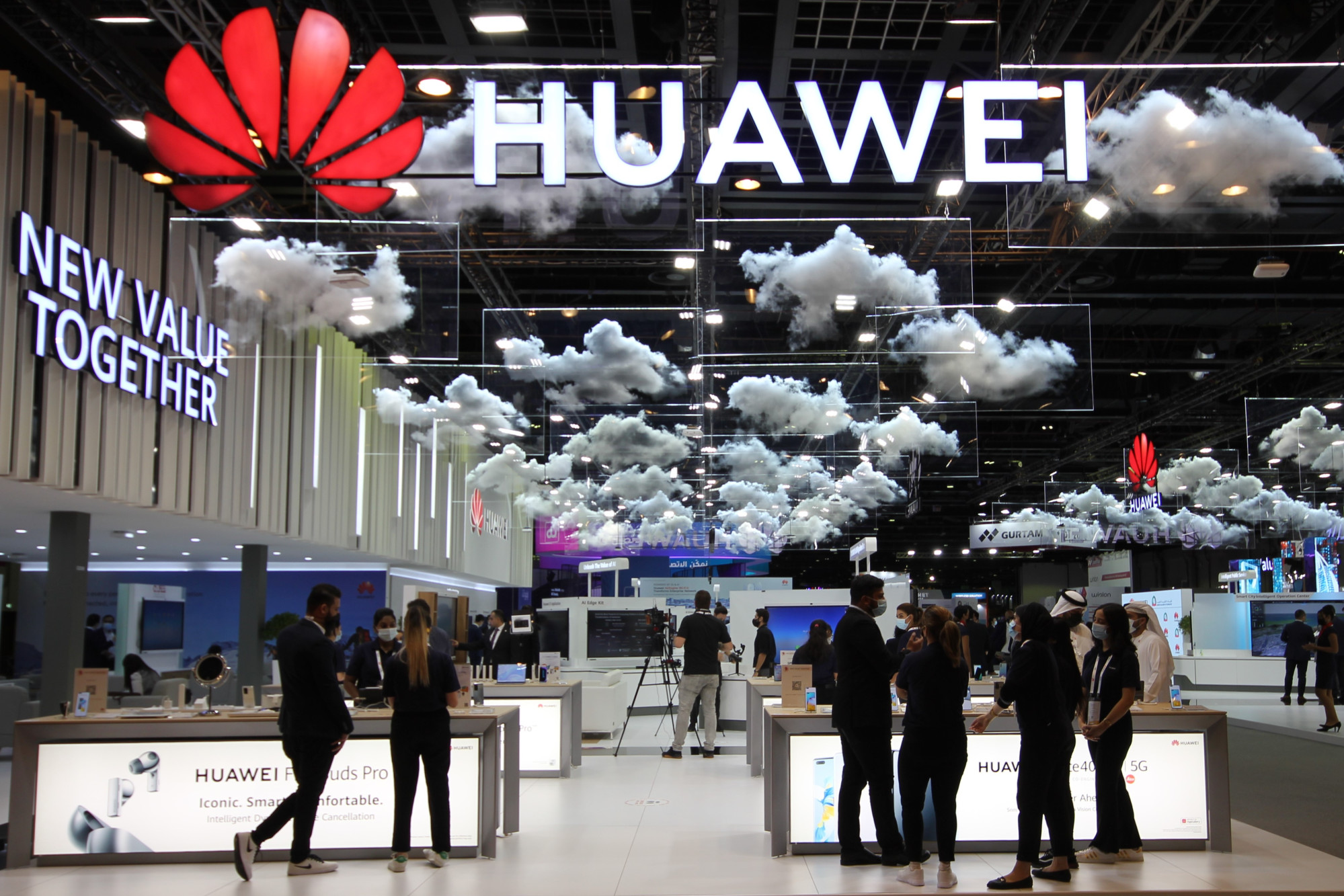Advertisement
Advertisement

Chinese telecoms giant Huawei deepens push into enterprise market with new products as US trade sanctions continue to bite
- Huawei on Wednesday unveiled a new range of commercial office products including laptop and desktop computers, printers and displays
- The new product launch also served notice to the public that Huawei’s consumer business group has been rebranded as the device business group
Chinese telecommunications giant Huawei Technologies Co on Wednesday unveiled a new range of commercial office products that deepens its push into the enterprise market, as the company continues to diversify its business under the weight of US trade sanctions.
Targeted at both government and corporate clients, the new products – including laptop and desktop computers, printers and displays – come with Huawei’s own cloud storage and data protection services, according to the Shenzhen-based company.
The office product launch online also served notice to the public that Huawei’s consumer business group, led by its once-lucrative smartphone operations, has been rebranded as the device business group.
“The rebranding marks Huawei’s expansion into the commercial [office] market,” Richard Yu Chengdong, the long-standing chief executive of Huawei’s consumer business group, said during the launch.

Yu, who also heads Huawei’s intelligent vehicle solutions operation, said the device business group will focus on the education, healthcare, manufacturing, transport, financial services and energy industries.
The rebranding of Yu’s business group reflects Huawei’s firm commitment to reposition itself as a major solutions provider for enterprises and governments.
One of the privately-held company’s enterprise services segments, Huawei Cloud, already posted 20.1 billion yuan (US$3.1 billion) in revenue last year, up 30 per cent from 2020. Huawei Cloud had an 18 per cent share of mainland China’s cloud infrastructure services market last year, according to research firm Canalys, to rank behind the industry leading cloud unit of Alibaba Group Holding, owner of the South China Morning Post.
Huawei’s enterprise market expansion comes after its recent move to issue 3 billion yuan of short-term debt, a month after selling 3 billion yuan in China’s interbank market. The proceeds will support business development and “implementation of critical strategies”, according to the company.

Huawei, the world’s largest telecoms equipment maker and formerly China’s biggest smartphone vendor, was added to Washington’s trade blacklist in May 2019. The company has since scrambled to adapt its operations to tighter restrictions imposed in 2020, covering access to chips developed or produced using US technology, from anywhere.
The company posted total revenue of 636.8 billion yuan last year, down 29 per cent from 2020, representing its worst annual sales performance on record.
With no end in sight to US restrictions amid simmering tensions between Beijing and Washington, Huawei has pursued initiatives to diversify its operations. These include launching an electric sport-utility vehicle, selling refurbished smartphones and licensing its handset designs, expanding its cloud services operations in the Asia-Pacific region and establishing partnerships for its HarmonyOS mobile platform.
Still, Huawei’s struggles continue. Yu this week said in an interview posted on microblogging platform Weibo that the global chip shortage and other supply chain disruptions have made it difficult for Huawei to meet its electric vehicle production target.
“It’s almost impossible for us to deliver the 300,000 models this year because of the global chip crunch,” Yu said.

Post
